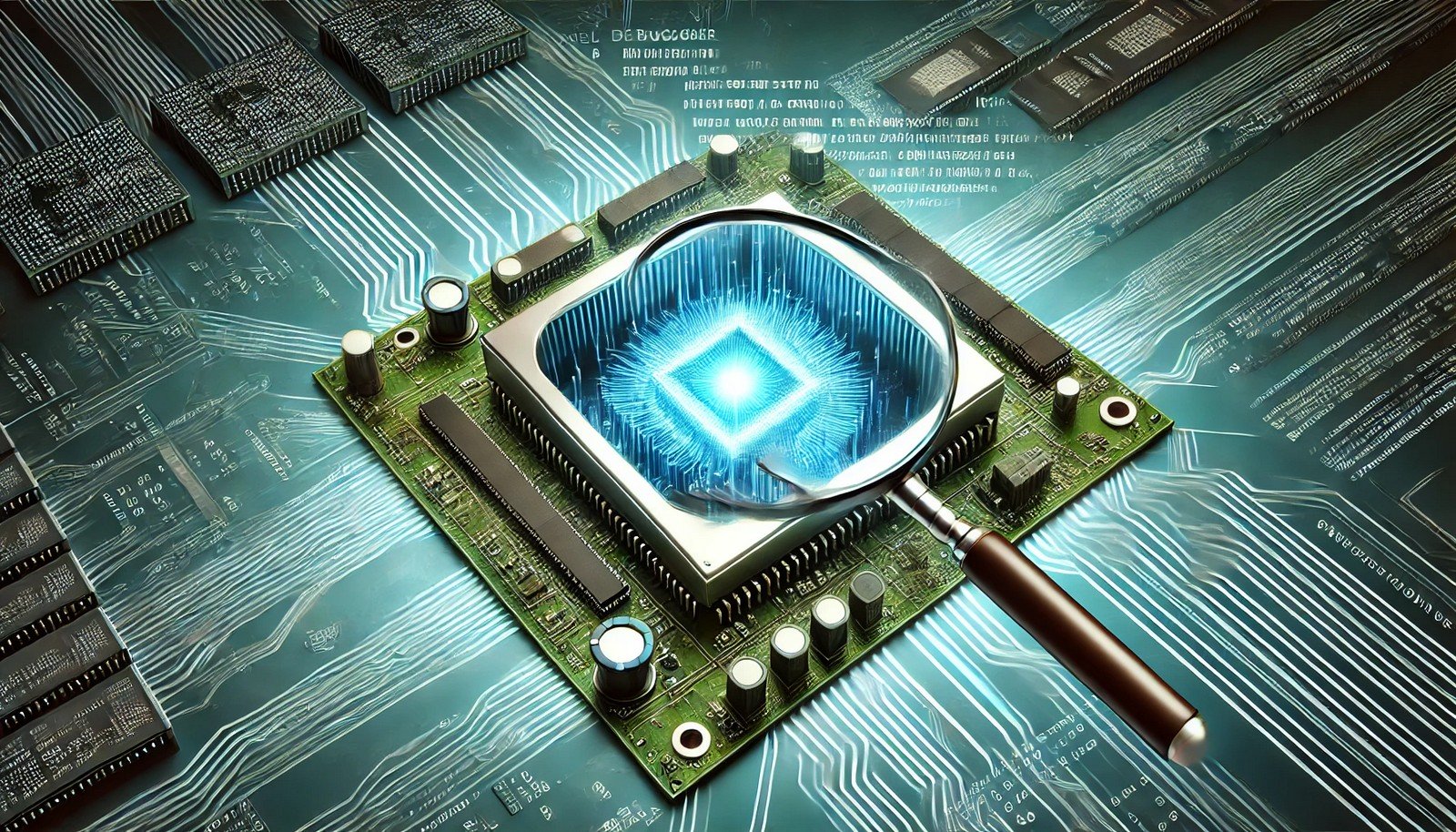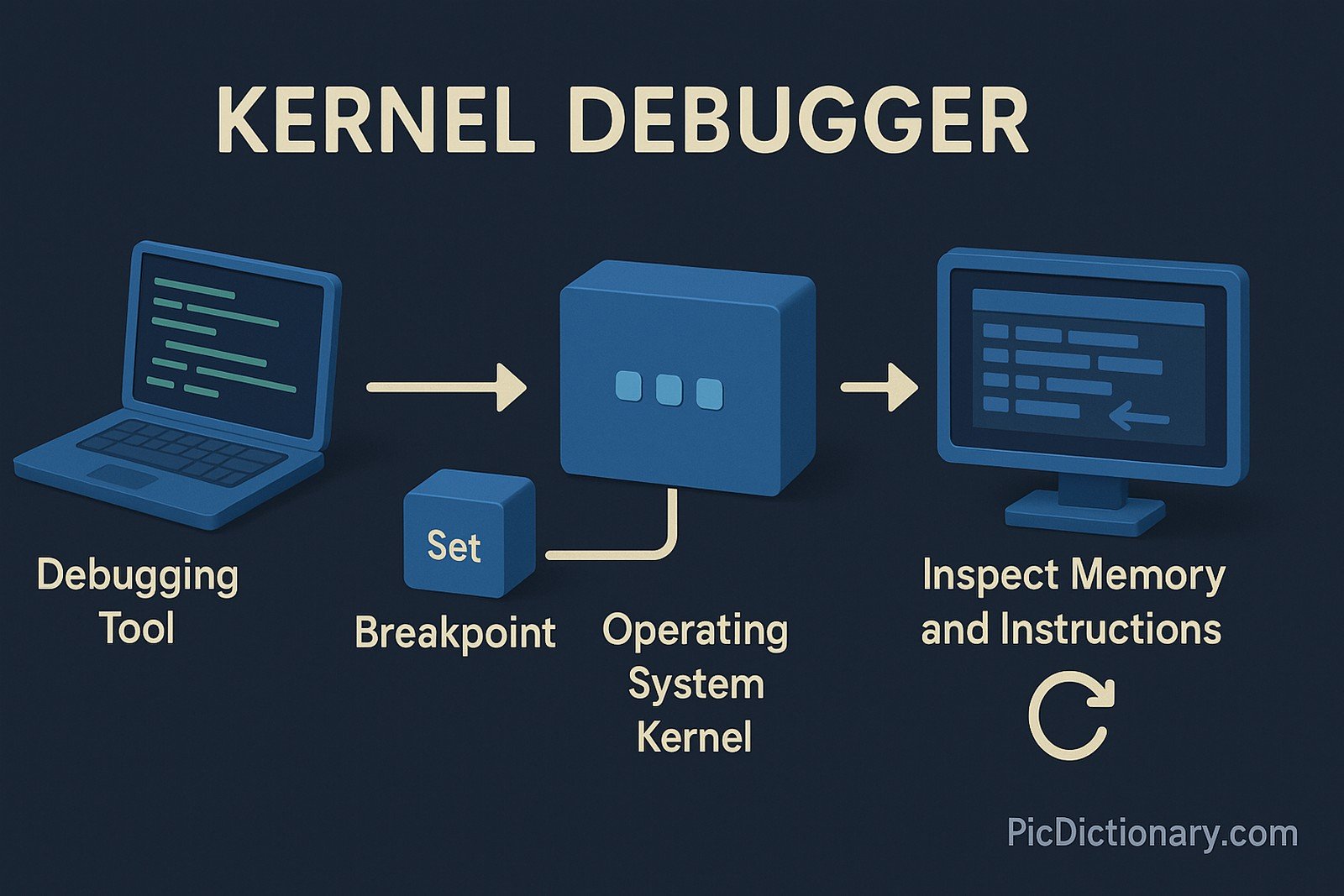Kernel Debugger

(Representational Image | Source: Dall-E)
Quick Navigation:
- Kernel Debugger Definition
- Kernel Debugger Explained Easy
- Kernel Debugger Origin
- Kernel Debugger Etymology
- Kernel Debugger Usage Trends
- Kernel Debugger Usage
- Kernel Debugger Examples in Context
- Kernel Debugger FAQ
- Kernel Debugger Related Words
Kernel Debugger Definition
A kernel debugger is a specialized debugging tool designed to inspect and modify the internal state of an operating system's kernel while it is running. It allows developers to troubleshoot low-level system issues, analyze crashes, and debug device drivers. Kernel debuggers provide breakpoints, memory inspection, and instruction stepping, making them essential for diagnosing complex system errors. Examples include WinDbg for Windows, KGDB for Linux, and LLDB for macOS.
Kernel Debugger Explained Easy
Imagine your computer is like a huge factory with thousands of machines working together. The kernel is like the factory manager, making sure everything runs smoothly. Sometimes, things go wrong, and the manager needs help to figure out the problem. A kernel debugger is like a detective that stops the factory to inspect the machines, find what’s broken, and fix it so everything works properly again.
Kernel Debugger Origin
Kernel debugging originated from the need to analyze and fix operating system errors at a deep level. Early mainframes and minicomputers in the 1970s had built-in debugging capabilities to examine system memory. As operating systems grew more complex, dedicated debugging tools were developed for UNIX, Windows, and Linux to allow developers to analyze kernel-level code.
Kernel Debugger Etymology
The term “kernel debugger” combines “kernel,” referring to the core of an operating system, and “debugger,” which denotes a tool used to find and fix software errors.
Kernel Debugger Usage Trends
Kernel debugging has gained significance with the increasing complexity of operating systems and cybersecurity threats. It is widely used in system development, security research, and malware analysis. As modern OS kernels implement advanced security protections, kernel debugging tools have evolved to support features like secure boot debugging, hypervisor-assisted analysis, and memory forensics.
Kernel Debugger Usage
- Formal/Technical Tagging:
- Operating System Development
- System Debugging
- Security Research - Typical Collocations:
- "kernel debugger interface"
- "debugging kernel modules"
- "kernel panic analysis"
- "real-time kernel debugging"
Kernel Debugger Examples in Context
- Security analysts use a kernel debugger to inspect suspicious processes running in an operating system.
- Developers rely on kernel debuggers to troubleshoot device driver crashes in Windows and Linux.
- A kernel debugger helps analyze low-level system failures during operating system development.
Kernel Debugger FAQ
- What is a kernel debugger used for?
A kernel debugger is used to analyze and modify a running operating system's kernel to diagnose issues, debug drivers, and investigate security vulnerabilities. - How does a kernel debugger work?
It interacts with the kernel through special debugging interfaces, allowing developers to set breakpoints, inspect memory, and execute commands while the system runs. - Is kernel debugging dangerous?
Yes, improper use of a kernel debugger can crash an operating system or expose it to security risks, so it should be used carefully. - Which operating systems support kernel debugging?
Windows, Linux, macOS, and BSD-based systems support kernel debugging with specialized tools. - Can kernel debugging be used for security research?
Yes, security researchers use kernel debuggers to analyze vulnerabilities, reverse-engineer malware, and study OS security mechanisms. - What tools are commonly used for kernel debugging?
Popular tools include WinDbg (Windows), KGDB (Linux), LLDB (macOS), and GDB with kernel support. - How does kernel debugging differ from user-space debugging?
Kernel debugging deals with the core OS code and requires special permissions, while user-space debugging is limited to regular applications. - What is a kernel panic, and how does a debugger help?
A kernel panic is a critical system crash. A debugger helps analyze crash logs and memory dumps to identify the root cause. - Do kernel debuggers support remote debugging?
Yes, many kernel debuggers allow remote debugging over serial, network, or USB connections. - Is kernel debugging useful for developers?
Absolutely. Developers use it to troubleshoot device drivers, analyze memory corruption, and ensure OS stability.

Kernel Debugger Related Words
- Categories/Topics:
- Operating System Internals
- Debugging Tools
- Cybersecurity
Did you know?
The first kernel debuggers were built into early UNIX systems to diagnose crashes. Today, kernel debugging is not only used for troubleshooting but also plays a crucial role in cybersecurity by detecting and analyzing rootkits and malware that attempt to operate at the kernel level.
PicDictionary.com is an online dictionary in pictures. If you have questions or suggestions, please reach out to us on WhatsApp or Twitter.Authors | Arjun Vishnu | @ArjunAndVishnu

I am Vishnu. I like AI, Linux, Single Board Computers, and Cloud Computing. I create the web & video content, and I also write for popular websites.
My younger brother, Arjun handles image & video editing. Together, we run a YouTube Channel that's focused on reviewing gadgets and explaining technology.



Comments powered by CComment